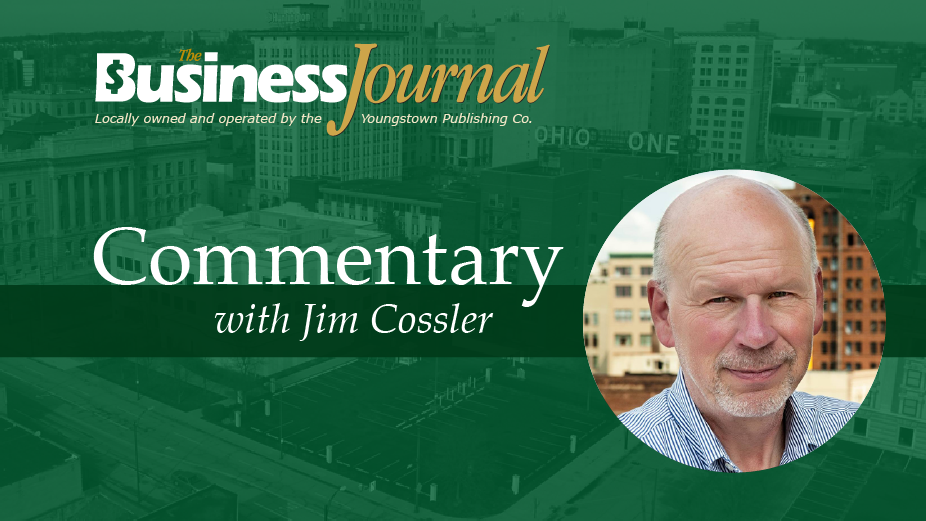By Jim Cossler
YOUNGSTOWN, Ohio – You can learn a lot by walking your dogs.
When we first moved to Aurora almost 19 years ago, it became my daily habit to take our dogs on long, early morning walks through our suburban neighborhood.
Despite the pre-dawn hour, there was always someone else who had gone through the neighborhood before us. And that someone was the Cleveland Plain Dealer delivery vehicle, which had deposited that day’s edition in a plastic sleeve at the base of almost every driveway we passed. Yes, there was one on almost every single driveway.
Fast forward to our walk this morning. I counted only three houses with a Plain Dealer delivery. Just three. And, yes, that is a fully accurate number because I knew I would begin writing this column when I returned home from our walk.
Now it could be that all the print subscribers to the PD, through the intervening years, switched over to paid online readers. Which is the way I choose to consume news. But I know for a fact that is not the case.
And while my dogs have yet to offer an opinion, data show that something terribly troubling is happening. Local news, and in particular local daily newspapers, are collapsing at an astonishing rate. And the consequences of the same will be devastating.
The demise of local newspapers began in the 1950s with the arrival of television stations. The impact was not too significant because many people were just not satisfied with as little as 15 minutes of local news reporting that television provided. They wanted more. But while newspaper circulation continued to grow slightly in the 1950s because of population growth, market share began to drop as a result of television.
What spelled the death knell for local newspapers was the arrival of the Internet in the 1990s and its explosive growth beginning in the early 2000s. Nowhere was that damage seen more than in the enormous loss of newspaper classified advertising revenue for jobs, services, vehicles and real estate postings to online sites like Craigslist.
Classified advertising accounted for as much as 70% of total revenue for local newspapers. Suddenly it was being siphoned away by online competition.
Research has shown that Craigslist alone cost the newspaper industry $5.4 billion in lost revenue just from 2000 to 2007.
But retail and business advertisers began fleeing newspapers as well because they could not deliver the targeted advertising that their online competitors could. If an advertiser’s target market is 18- to 35-year-old women, that demographic would make up a certain part of a newspaper’s readership.
But the newspaper advertising model would have you pay for all the other readers as well. Online advertising models allow you to pay just for the demographic characteristics of the target market you want. So why pay for newspaper reader “eyeballs” that will never become a customer?
Clearly the traditional model of the daily print newspaper is dying. The dramatic loss of advertising to more efficient and effective online rivals, the steep decline in paid subscribers and the additional cost burden of expensive union contracts, printing presses, newsprint, delivery vehicles, and physical overhead that is absent in online media, is simply unsustainable.
But local news is just too critically important to let slip away. Local reporters are our eyes and ears. They are our watchdogs. They are present where and when we cannot be. At meetings of city councils, county commissioners, school boards, planning boards and zoning committees. All of which affect you on a personal level. And they keep our elected officials honest.
If a mayor gives a $2 million no-bid, sweetheart contract to his brother, how would you know about it if not from a reporter?
Research has shown that inadequate local news coverage has been tied to increased political and civic corruption, less competitive elections, lower voter turnout, weaker municipal finances and a dominance of party-line politicians. None of which serves any of us well.
Now may be the time to declare local news coverage an essential public good and provide public funding for it. We have done so for our libraries, the repositories of information. Why can’t we do the same for newspapers, the distributors of information?
The Brookings Institution, a highly regarded national public policy think tank, is calling for exactly this type of public funding for local journalism. A tax deduction for subscriptions. Tax offsets for eligible production expenditures. And a new tax code for newspapers to operate as nonprofits in the public interest.
I am totally onboard with that. What about you?
